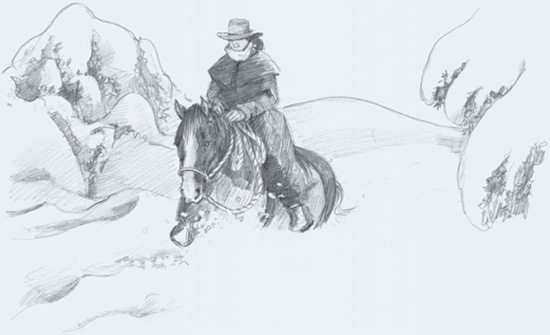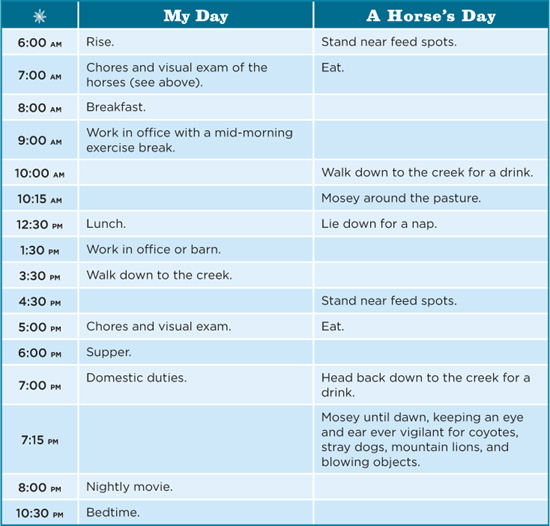

Even though this is the middle of winter for us, I always feel energized at the New Year. January is an opportunity for a fresh start, setting new goals, making plans, and preparing for the next busy horse season. From April 1 through November 15, the days are packed, and we spend a lot of time outdoors. From mid-November to the end of March, we hibernate a bit, writing the books and video scripts that are the basis of our work.
That’s why January is a good time to make lists and set up calendars and notebooks. They help me stay organized and keep track of all the things that a horsekeeper must do.
The horses kick back at this time of year. It is usually too windy and cold for much training and riding, so if there is sufficient snow cover, the horses are out on winter pasture — unless we have a blizzard or very strong winds. As long as the pastures are protected with a snowy blanket, the horses don’t do too much damage to the land, and the snow makes a nice clean place to feed them; plus, they get free-choice exercise and a soft place to lie down.
Some winters, I let some of the horses grow a full-length winter coat. In other years and with certain horses, I blanket all winter. (See July, October, and November for everything about blankets.) I do little grooming of pasture horses this time of year, because I don’t want to disturb the natural protective sebum that lies next to the skin and acts as a windproof and waterproof layer. One or two horses are usually shod with winter shoes and pads for days when the weather allows training or riding, but the rest are barefoot.
The horses are fed at 7:00 a.m. and 6:00 p.m. Only the seniors get concentrates at this time of year; the rest do quite well on just hay. The horses are carrying a little bit more weight at this time of year than usual. The extra layer of fat helps to keep them warmer. Their full-time turnout keeps them in good shape physically, because they have to walk down to the creek several times each day to drink and they mosey around between feedings.
In addition to the exercise from doing chores, I find it essential to go for a walk every day. As an added benefit, a healthy dose of sunlight helps prevent those winter blues. I am usually champing at the bit to begin working with the horses full time, so I pacify myself with pre-riding exercises to stretch and strengthen those muscles that might have become slack over the winter.
OVERALL STANCE AND ATTITUDE. As I approach with feed, does the horse have his head up, are his eyes bright, and is he eager for feed, or is he lethargic, inattentive, or anxious?
Weekly Tasks
 Restock the hay supply in horse barns
Restock the hay supply in horse barns
 Check grain supply
Check grain supply
 Dump and scrub all waterers, troughs, tanks, tubs, and buckets
Dump and scrub all waterers, troughs, tanks, tubs, and buckets
 Scrub feed dishes
Scrub feed dishes
 Check veterinary supply needs
Check veterinary supply needs
 Check upcoming farrier and veterinarian appointments and get ready for them
Check upcoming farrier and veterinarian appointments and get ready for them
 Keep winter feeding areas clean of old feed that might have become wet from snow
Keep winter feeding areas clean of old feed that might have become wet from snow
Seasonal Tasks
 Spread manure
Spread manure
 Clean tack
Clean tack
 Get ready for spring!
Get ready for spring!
LEGS. I look at the horse from both sides so I will quickly spot any wounds, swelling, or puffiness. If the horse is shod, I look for four shoes, tightly nailed.
APPETITE. Have the horses finished all of the hay from the previous feeding? Are they all anxious to get the new ration?
WATER. Is there evidence that the horses have taken in a sufficient amount of water?
MANURE. Although difficult to assess on pasture, I try to observe whether the fecal material is well formed or if it is hard and dry, loose and sloppy, covered with mucus or parasites, or filled with whole grains.
MOVEMENT. Does the horse move comfortably and soundly as he approaches?
